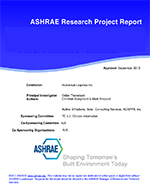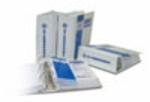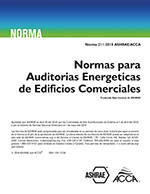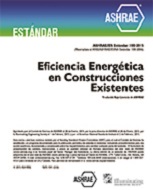Description
The work reported herein was undertaken to evaluate and compare various two-phase mass flow rate measurement techniques that are applicable to refrigerant flow in refrigeration and heat pump equipment.
A critical review of the various techniques of measuring void fraction and two-phase mass flow rate was conducted. The most promising techniques for use in refrigeration and air-conditioning systems were identified and selected methods were chosen to be evaluated experimentally. A summary of the findings is included in this report while the details of this review were reported earlier.
A flow boiling loop, using refrigerant R-134a as the working fluid, was prepared for the experimental work. The loop is capable of generating a wide range of test conditions; typical of refrigeration and heat pump equipment. The experimental program involved testing the use of a venturi meter and a turbine flowmeter for liquid-vapor mass flow rate measurements. The flow rate measurements were complemented with void fraction measurements obtained by either a capacitance transducer or a gamma densitometer.
A number of models were used to combine the output of either the turbine flowmeter or the venturi flowmeter, with the’ void fraction measurement to determine the mass flow rate. Another approach, in which the output signals from the venturi and turbine meters were combined to determine the mass flow rate, was also used. In testing the various methods and models for determining the liquidvapor mass flow rate, the effect of the mixture quality and flow regime were extensively examined to identify their ranges of applicability.
Based on the present work, a number of methods, with comparable accuracies, were identified. The use of the venturi meter, together with a multi-ring capacitance transducer for void fraction measurement provided the best overall accuracy. In this case, the recommended model for calculating the mixture density is dependent on the mixture quality range. For qualities less than 0.5, the momentum density model should be used and the accuracy of the flow rate measurements is expected to be better than ±20%. In the higher quality range, the use of the homogeneous density model is recommended with either the turbine or venturi flowmeter and the accuracy of the measurements would be better than + 10%. In the absence of a reliable void fraction meter, the use of a combination of a turbine and a venturi flowmeters is recommended. The expected measurement accuracy in this case will range from ±30% for the low end of the quality range up to ±5% in the high quality range. Given the need for extensive calibration of the void fraction meter, the turbine-venturi method is seen to be the most practical. When any of the meters is used for transient measurements the instantaneous output should be averaged over a period of at least l.S seconds to eliminate the effect of the typical fluctuations encountered in two-phase flow. A summary of the recommended methods that cover the entire range of void fraction is shown in Table 1. ii
Product Details
- Published:
- 1994
- Number of Pages:
- 107
- File Size:
- 1 file , 1.8 MB
- Product Code(s):
- D-RP-722




